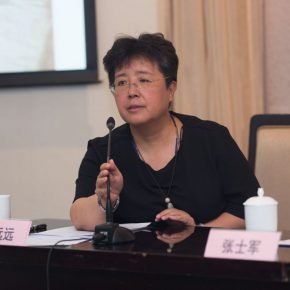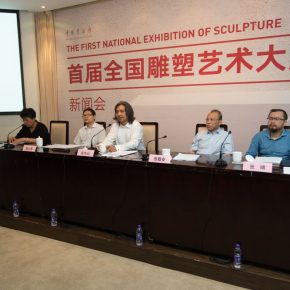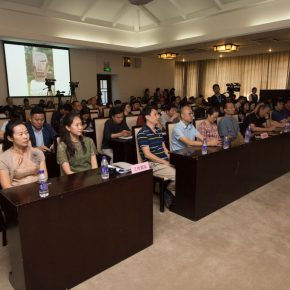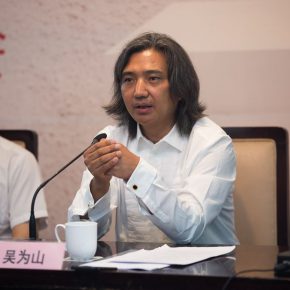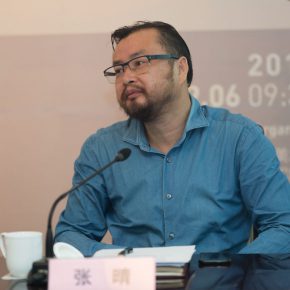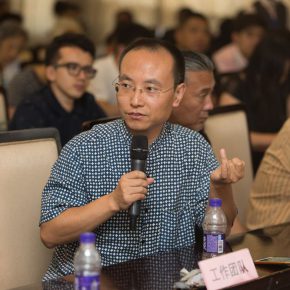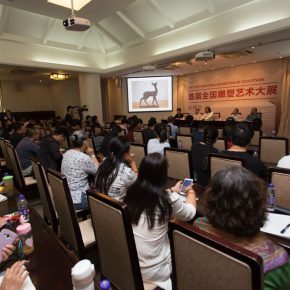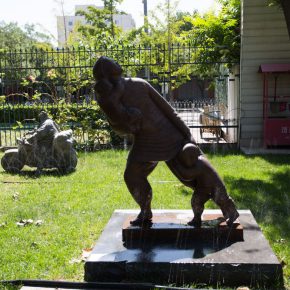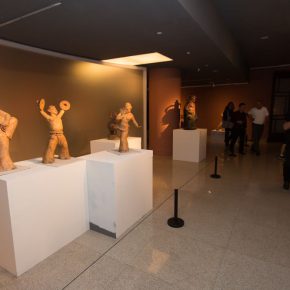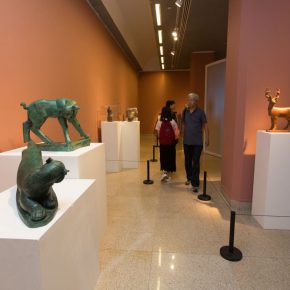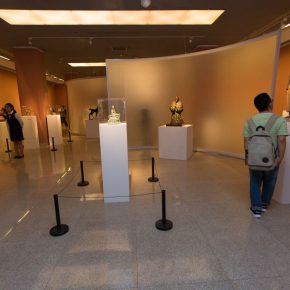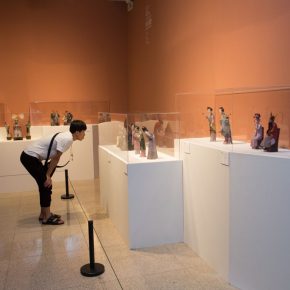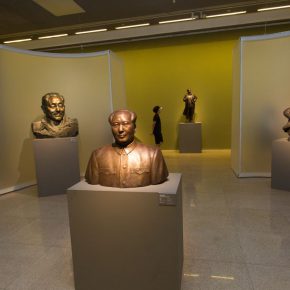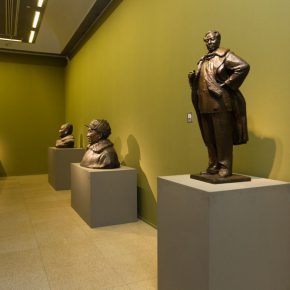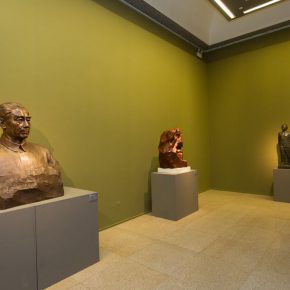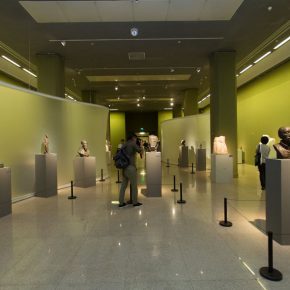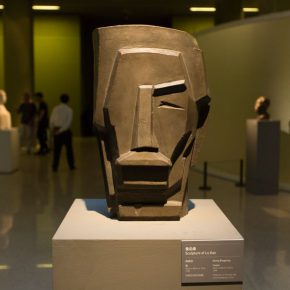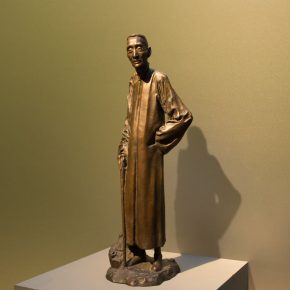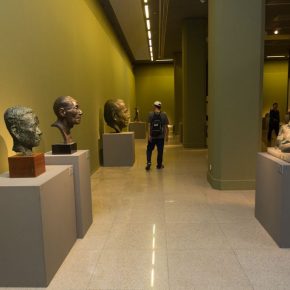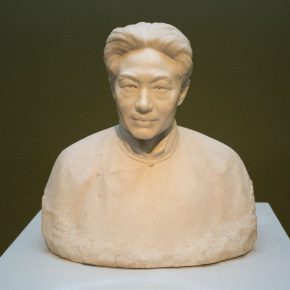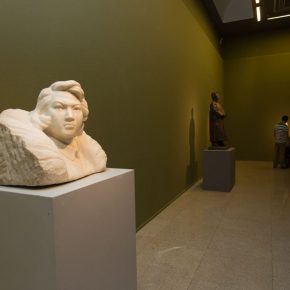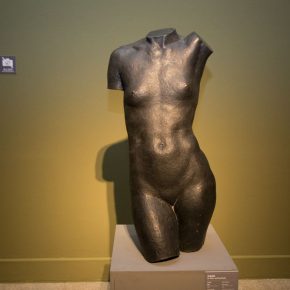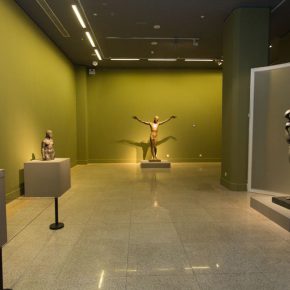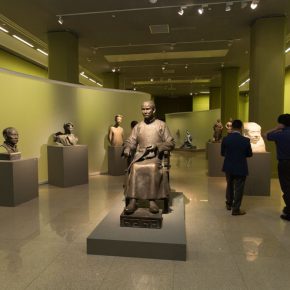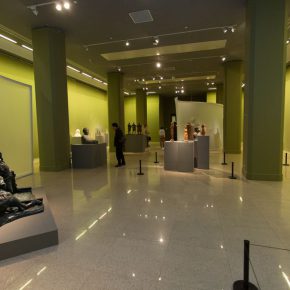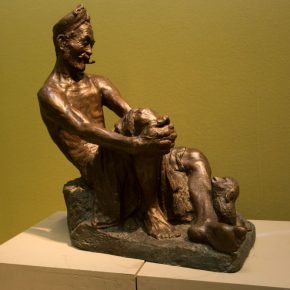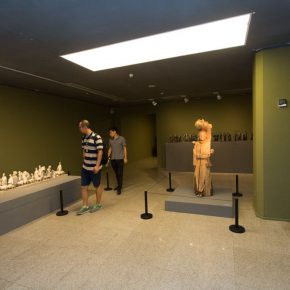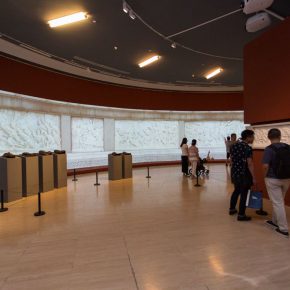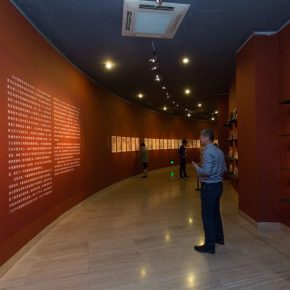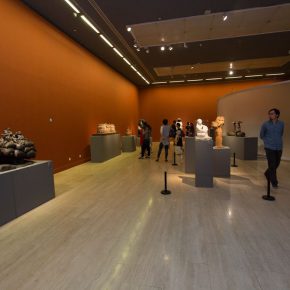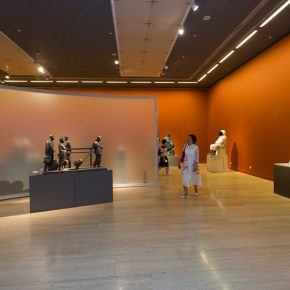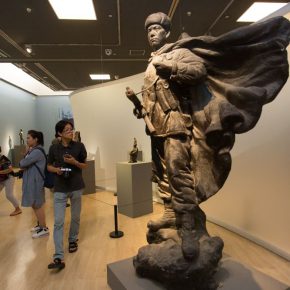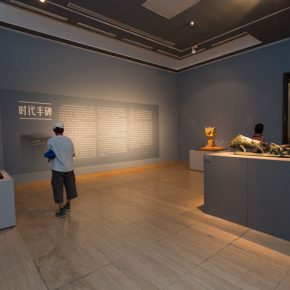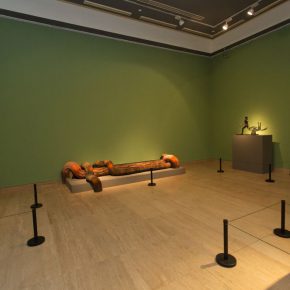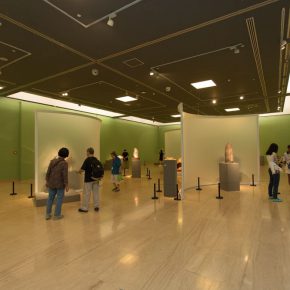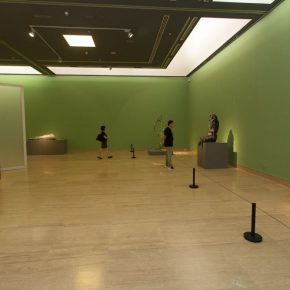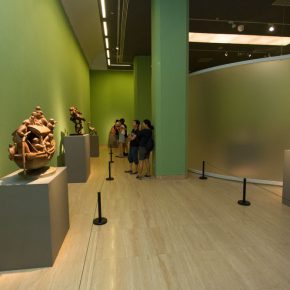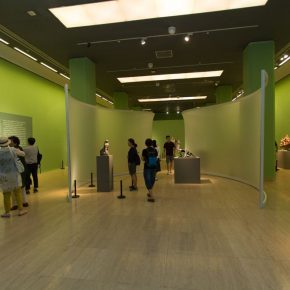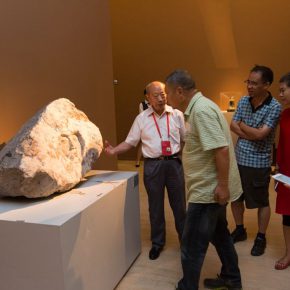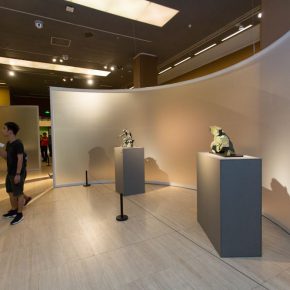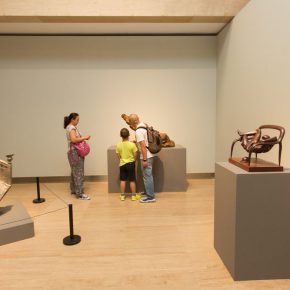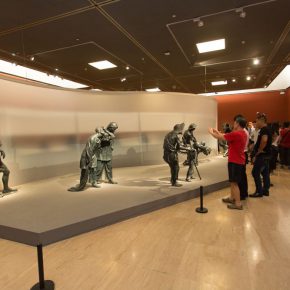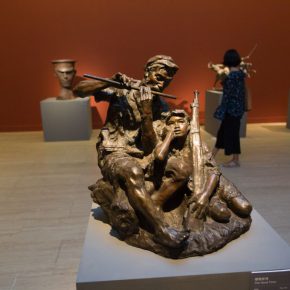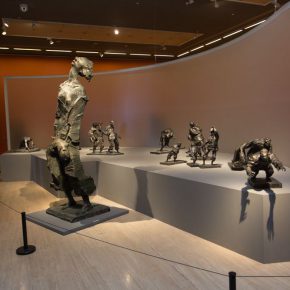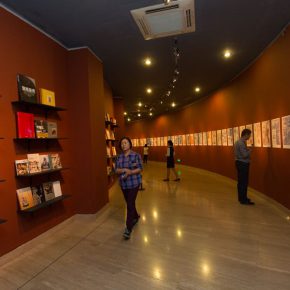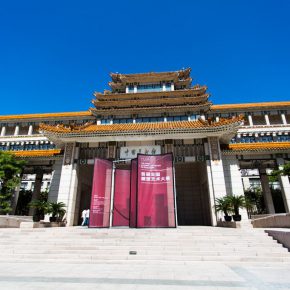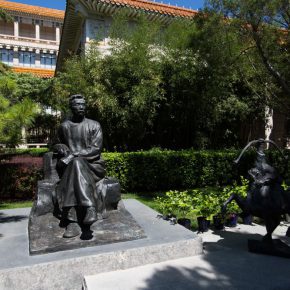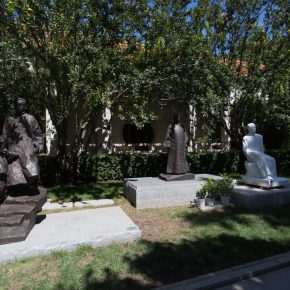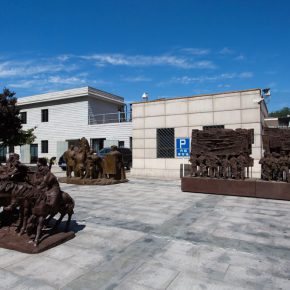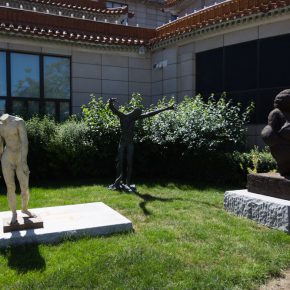
Organized by the National Art Museum of China, supported by Changchun Municipal People’s Government, “The First National Sculpture Art Exhibition” is on show at all the exhibition halls of the National Art Museum of China and the outdoor space from September 6 to September 17, 2017. The exhibition implements the spirit of the important speech of General Secretary Xi Jinping stating that "sticking to the Chinese Road, carrying forward the Chinese spirit, and uniting the Chinese power", to contribute to Chinese sculptural art in the 20th century, to sort out and study the collections of National Art Museum of China, as well as contemporary creative sculptures. It showcases 590 sculptures by 316 sculptors over the last one hundred years, to fully present the developmental course and important achievements of Chinese sculpture over the past hundred years.
The exhibition is divided into seven chapters, including “Tempering and Remembering the History”, “Shaping the Spirit and Cultivating the Person”, “Monument of the Times”, “Outstanding Traditional Sculptures by Craftsmen”, “Multiple Symphonies”, “Literati Mind and Freehand”, “Tracing the Source and Chasing Dreams”, to jointly narrative the centurial history of the sculpture in China.
“Tempering and Remembering the History” mainly showcases the national major thematic sculptures, through the performances of the process of national suffering, and Chinese people’s arduous struggle led by the Chinese Communist Party, to awaken people to remember the history and cherish their ancestors, encouraging people to donate themselves to the revival of the nation. Representations of the works include the “Bronze Statue of Prime Minister Sun Yat-sen” created by Jiang Xiaojian and the “Memorial Monument of Songhu Campaign” created by Liu Kaiqu, embodying the anti-imperialist and anti-feudal national liberation movement, “Reliefs of the Monument to the People's Heroes” that embodies the Chinese people standing up, as well as the realistic thematic creations, including the national sacrificial rhetoric in recent years, the large group of sculptural creations of the Nanjing Massacre, the masterpieces created by sculptors of different styles in China, and the major historical theme of the art creation project and Chinese civilization historical theme art creation project since the founding of new China.
“Shaping the Spirit and Cultivating the Person” focuses on the sculptures of portraits for an in-depth review of Chinese cultural traditions, to explore the modern transformation of sculptural art on an ontological level. The sculpture of character has experienced changes and integration in terms of artistic language, creative ideas, sculptural materials and display style, while the freehand spirit of the traditional Chinese culture is introduced to the creation of figure sculpture, in order to develop an isomorphism of the personality, cultural attributes, the form of modeling and the style of performance, to develop a new environment for figure sculpture.
“Monument of the Times” explores the developments and changes of modern urban sculpture in China. Several generations of outstanding Chinese sculptors closely connected their ideals with the fate of the whole nation, to create touching works of art for the liberation of the nation and the prosperity of the country. These works have both become urban cultural landmarks and public spiritual landmarks.
“Outstanding Traditional Sculptures by Craftsmen” is rooted in the excellent Chinese traditional sculptures. The folk sculptures represented by “Hui Clay Sculpture” and “Clay Figure Zhang” come from life and beyond life, creating lovely images using exaggerated shapes and colors, fully demonstrating the creativity of folk wisdom. These works of art are born in the native land and inner art, offering a wealth of nutrients. Seeing each dazzling folk sculptural work, the audience can enjoy the dynamic life which is vividly portrayed, to feel the national memories and cultural connotations carried by the works.
“Multiple Symphonies” take a broad view of the multiple creations of sculpture since the reform and opening up. Along with the transformation of Chinese society, the sculptural industry has changed with the expression of artistic conception and cultural consciousness, and the aesthetic pursuit is gradually replaced by cultural recourse, the pure exploration of language and form was replaced by the exploration of concept. Chinese sculptures of the new period blend the daily life experience and the mass media in the sculptural creation, the plural forms and languages, as well as the innovation of concept. The sculptors of the new era integrate daily life experiences and the mass media into the creation of sculpture, the multiple formal languages and conceptual creation create multiple dimensions of interpretation for the sculpture in the alternated exhibition spaces, expanding the connotation of the ontology of sculptural art.
“Literati Mind and Freehand” casts the essential spirit of freehand sculptures. Freehand sculpture is filled with tributes to their own culture, shining with the spiritual light of the traditional Chinese aesthetics. It refers to the cultural structure to “complement Confucianism and Taoism”, the inner life of “spirit resonance”, the way of viewing of “sightseeing and insight”, the creative rule of “false or true complement”, the aesthetic production of “creating artistic conception with images”, the life experience of “clearing the mind and creating fragrant scenes”, appreciating characteristics that “comprehend nature” and the highest ideal of “clear and neutralizing”. Freehand sculpture has also been concerned with the period, the community and people. The freehand spirit is the true spirit of Chinese art, and it represents both China and the world.
“Tracing to the Source and Chasing Dreams” showcases the magazines, books and albums related to sculpture, bringing together many publications including “Liang You”, “Beiyang Pictorial”, “Shanghai Pictorial”, showing Chinese sculptural circles’ studies and disseminations of Chinese and foreign sculptors and their works over the last century, and also compiling a series of sculptural books edited by Wang Jiyuan, Zhang Chengjiang, Xiong Songquan, Ye Shaoyun and so on. The audience can get into the past cultural period and space and perceive the century-old developmental history of Chinese sculpture, and feel the track of the mind of Chinese sculpture over the last hundred years.
“The First National Sculpture Art Exhibition” is the largest full-scale exhibition of sculpture in China. When it presents the process of Chinese sculpture in the past century, it also shows the results of collection, book reservation, and academic research of the National Art Museum of China, while these collections have played a great role in the major exhibitions of the National Art Museum of China, and this exhibition takes sculptural art as the main theme, to shape the national spirit and people, and also reflects the core socialist values of the times of the Chinese dream.
The sculpture that is as small as a ten-centimeter sculpture, or as large as many meters of urban sculptural display, and a large number of documents which are rarely seen, are presented in this exhibition. It also uses 3D scanning and printing technologies to reproduce the vigorous and sorrowful scenes of “Reliefs of the Monument to the People’s Heroes”, in addition, there are more than 30 surviving relics of well-known clay sculptures entitled “Wrath of the Serfs” that are collected and brought from the Tibet Autonomous Region are the highlights of this exhibition of sculpture.
Text by the organizer, translated by Chen Peihua and edited by Sue/CAFA ART INFO
Photo by Yang Yanyuan/CAFA ART INFO


